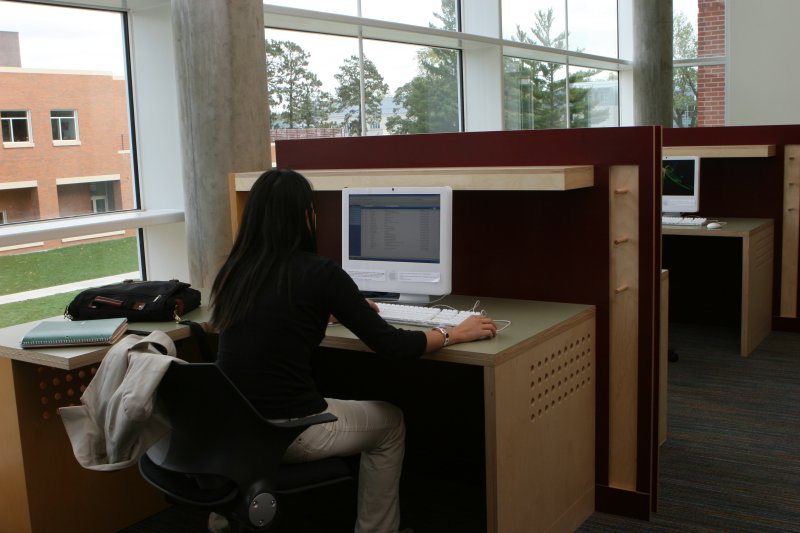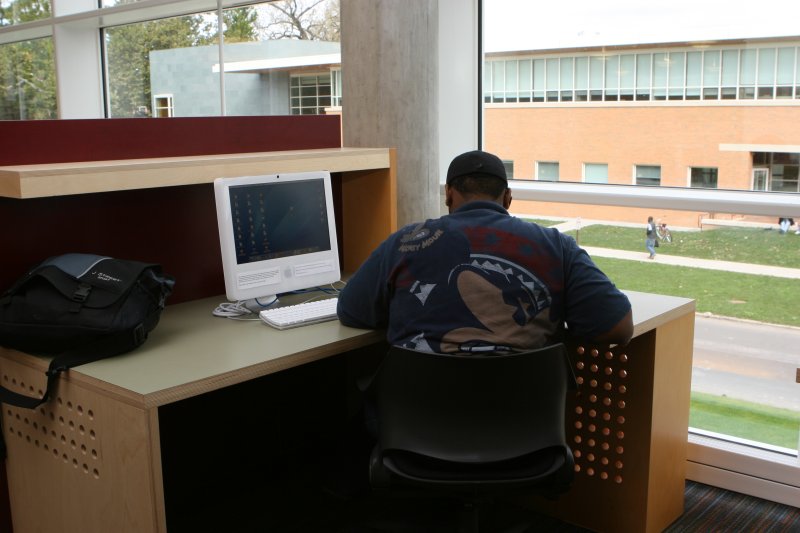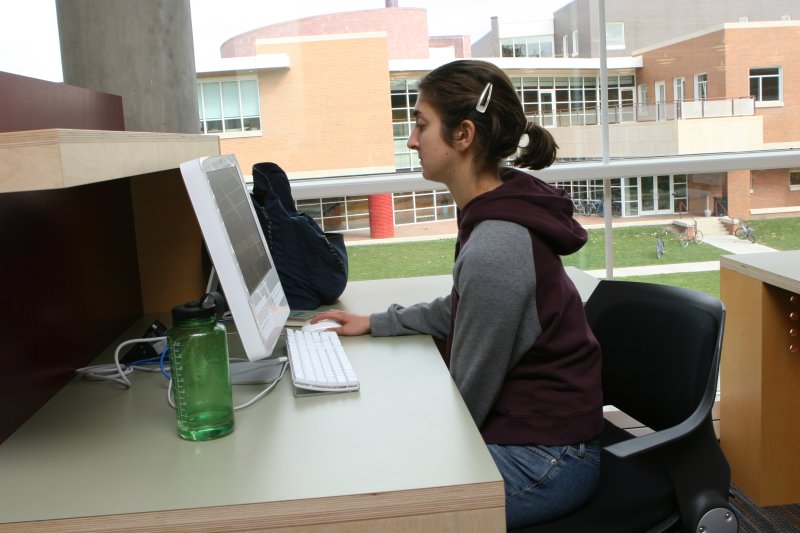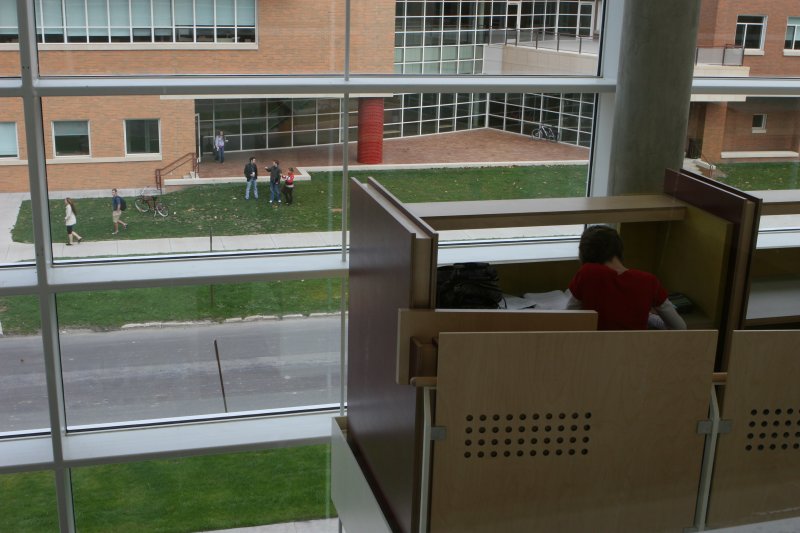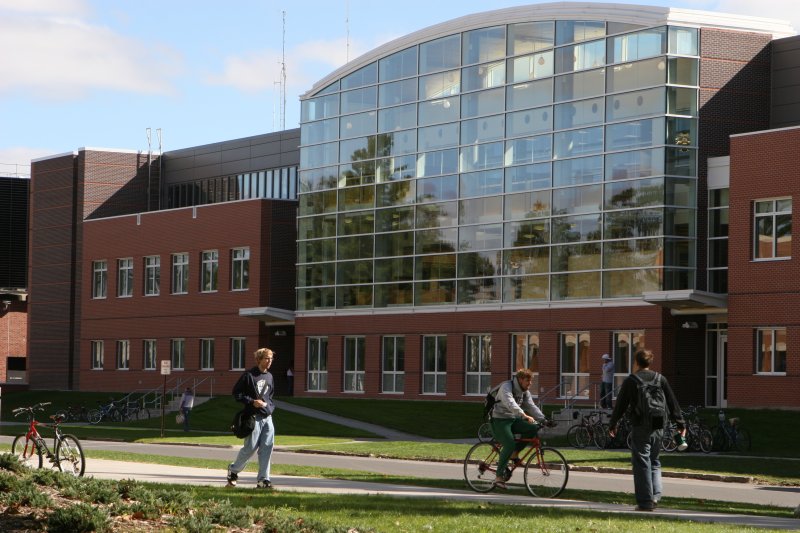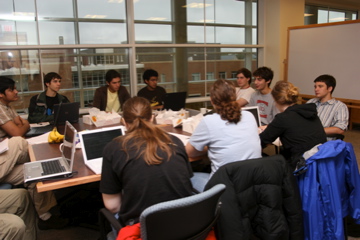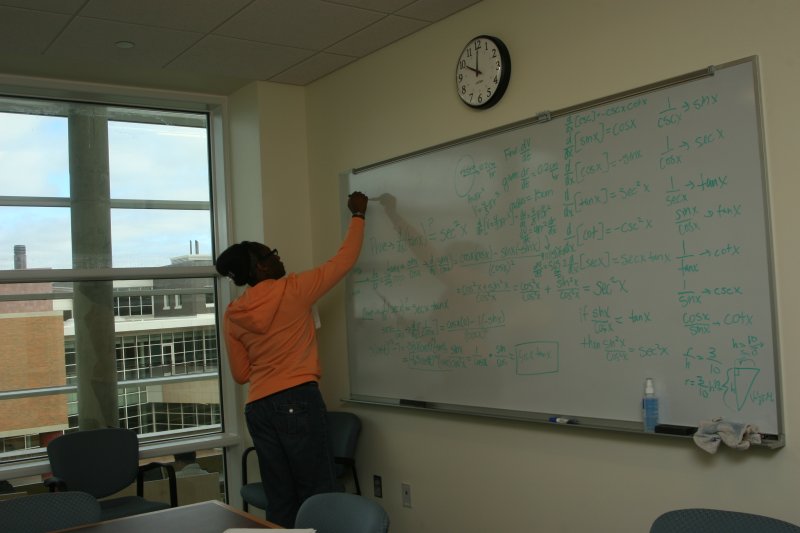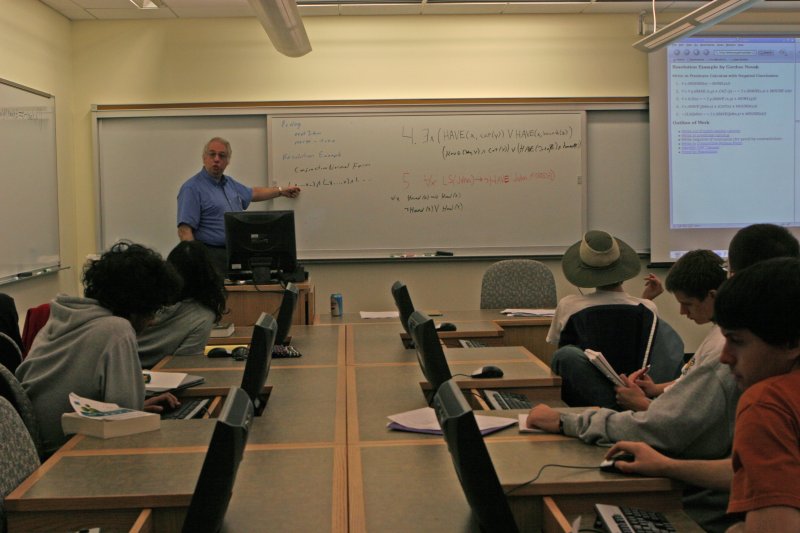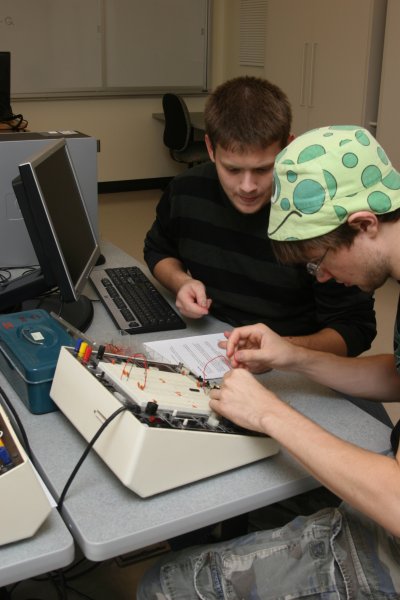Noyce Science Center
Photo gallery: Miscellaneous pictures
Click on any picture for the original, larger version.
| Noyce Science Center | Intro and Open Labs | AI/Capstone Lab | Systems Lab |
| Study areas | Commons | Research labs | Miscellaneous pictures |
Science Library in Noyce Science Center
Looking from the Science Library toward the Rosenfield Center
Photo gallery
Click on any picture for the original, larger version.
| Noyce Science Center | Intro Lab and Open Lab | AI/Capstone Lab | Systems Lab |
| Study areas | Commons | Research labs | Miscellaneous pictures |
The Computer Science Department occupies much of the third floor of the Noyce Science Center.
Study areas and the Commons
Within Grinnell's Noyce Science Center, each department has a commons and student study areas.
The Commons
The Computer Science Commons is large and centrally located within the department, with a lovely view of the Rosenfield Campus Center.
A kitchen area on the east side has refrigerator, sink, microwave, and cabinets to support social functions, such as the weekly Thursday Extras.
The west side of the Commons has tables, and sometimes is used as an informal classroom. For example, these pictures show meetings of a First Year Tutorial.
The Rosenfield Campus Center is seen through the windows of the CS Commons.
Student Study Areas
Two student study areas provide spaces for individual study and small-group collaborations. Furnishings include tables, desk-style chairs, and lounge chairs or a sofa.
White boards are found in the Commons, study areas, and corridors, as well as in classrooms and labs.
Upper-level teaching labs
Teaching labs designed for upper-level courses provide some special capabilities for systems courses and for courses (e.g., AI, computer organization and architecture) with special hardware needs.
Systems Lab
Experimentation in the area of computer networks, operating systems, and other systems-level courses require interactions among machines. For example, the exploration of computer protocols requires two or more computers to communicate with each other. However, should an experiment go wrong, the experiment could bring down any computers in the network—possibly even the entire campus network.
To control the potential impact of network-based experiments, computers in the systems lab can be configured in either of two modes:
- Computers may have a normal Internet connection to the campus backbone.
- Computers may connect to others in the lab, but the lab is isolated from the rest of the department and campus.
With such flexibility, the systems lab supports a wide range of possible experiments and explorations, while protecting the rest of the campus from possible ill effects.
AI/Capstone Lab
When working with special hardware (e.g., microprocessors), students must be able to lay out their equipment over an extended period of time. Further, facilities must reduce possible consequences of static electricity that can damage chips and circuits.
The AI and capstone lab provides an environment to work on hardware-based experiments and advanced projects. The tile floor controls the build up of static electricity, and the work areas and storage cabinets support long-term projects.
The introductory teaching lab and the open lab
Departmental facilities include an introductory teaching lab and an open lab with a connecting door between.
Introductory teaching lab
Since introductory CS courses often follow a lab-based format that emphasizes collaborative learning, these courses meet in our introductory teaching lab.
During whole-group discussions, an instructor may use white boards and projection equipment to consider concepts, review programs, and highlight approaches. Students gather in groups of two (occasionally three) at workstations; monitors are recessed to provide easy sight lines to all parts of the room.
During small-group collaborations, desks with workstations provide considerable room for discussion and interaction.
Wide aisles allow an instructor to circulate easily among groups during collaborative exercises.
Open Lab
The CS Open Lab provides an environment for students work work on homework and individual projects. Few classes are scheduled in the CS Open Lab, so students can use the lab during most of each day. A typical schedule has the lab open by 7:00 or 8:00 each morning on weekdays, and undergraduate Technology Consultants (TCs) keep the lab open until midnight or 1:00 am during most of the week. The department also works with the TCs, so they can provide basic assistance on the various software packages used in most computer science, mathematics, and statistics courses.
Facilities
The Department of Computer Science moved into our current facilities in May 2007. Some highlights of our quarters include:
- An introductory teaching lab and open lab, available on an extensive schedule (until midnight or 1:00 am most nights).
- An AI and capstone lab for student projects.
- A systems lab that allows experimentation with networking and operating systems, in an environment that is isolated from other campus networks.
- A regular, reconfigurable classroom for non-lab-based courses.
- A CS Learning Center for studying and peer mentoring.
- Two student study areas and a CS commons.
- Five faculty research labs that are sufficiently large to support student teams.
- Faculty offices, display cases, a print room, and other supporting pieces.
Computer equipment and A/V support
All teaching labs, our classroom, and our research labs utilize GNU/Linux-based workstations that are connected through our departmental network (MathLAN) to departmental servers and the campus Internet backbone.
Audio/visual facilities in each teaching lab and our classroom support a built-in desktop machine, DVD/VHS player, laptop connection, and CD player. A control panel allows the presenter to switch from one system to another at the touch of a button.

